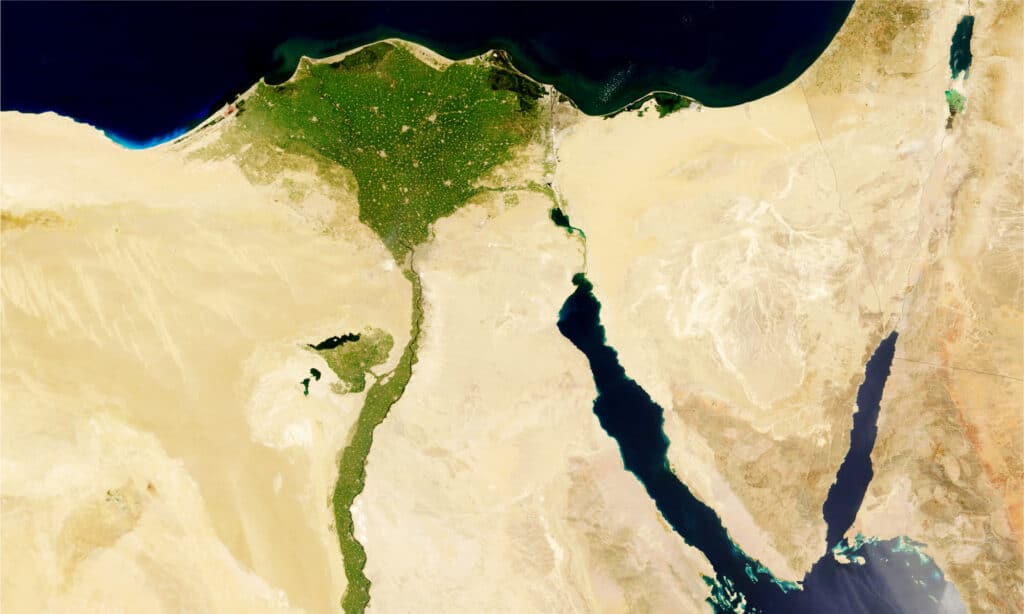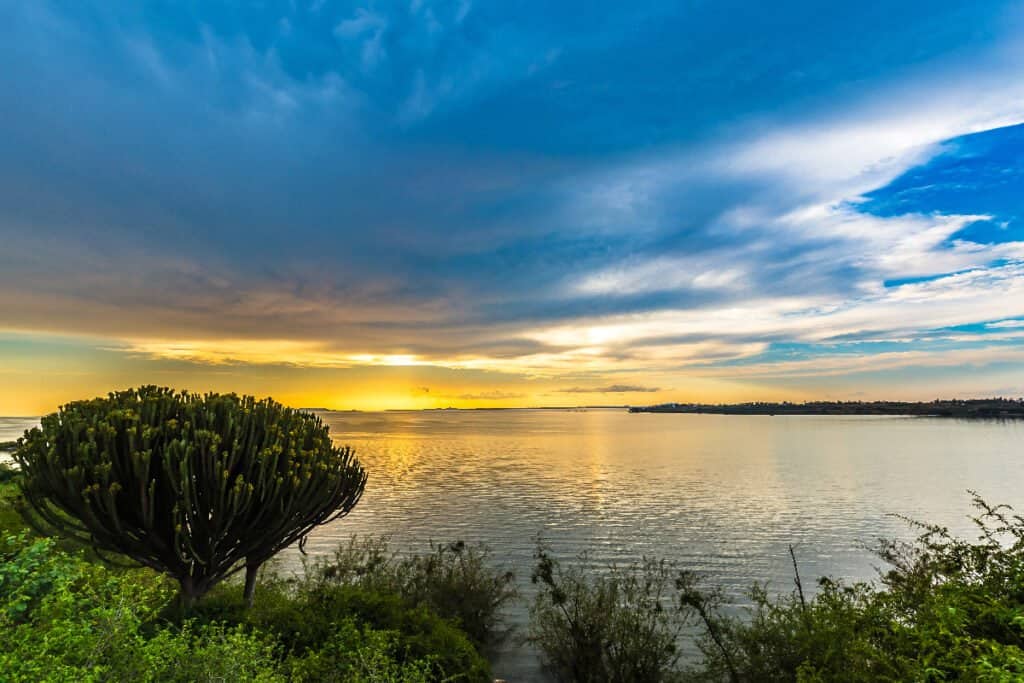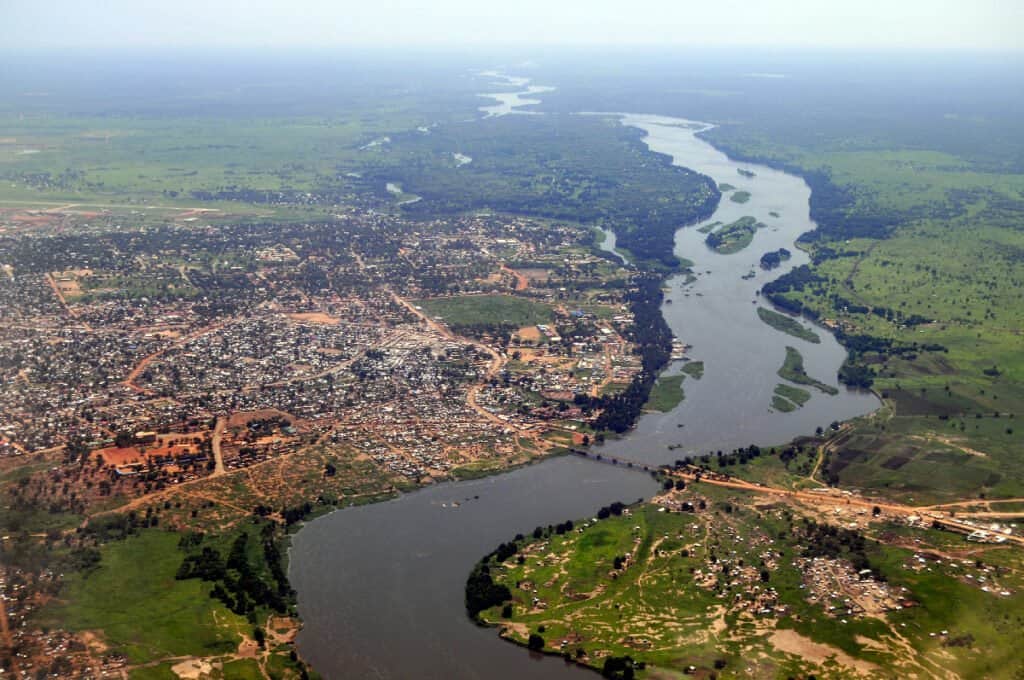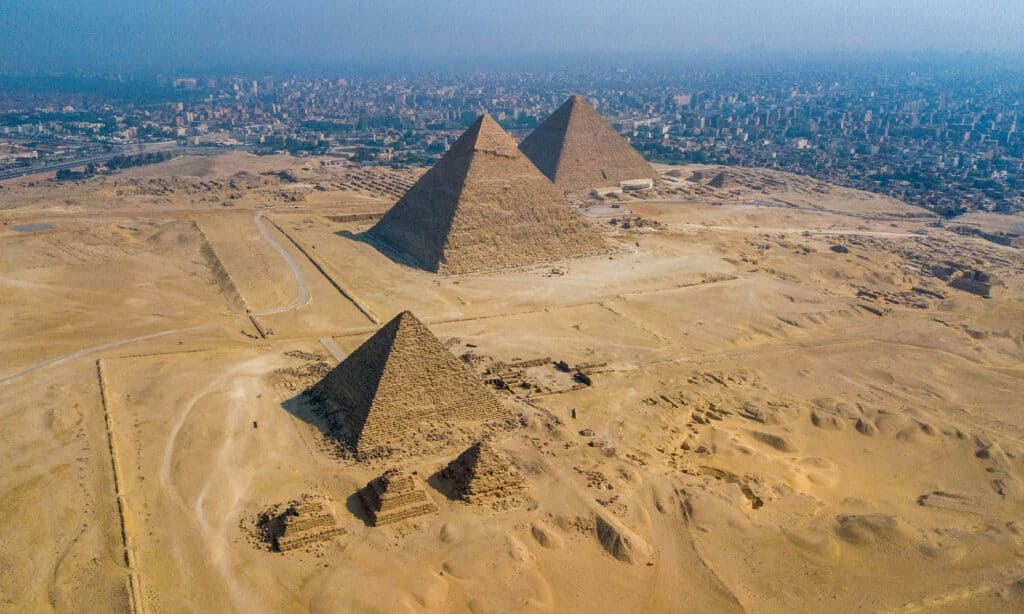The Nile might be the longest river in the world—maybe.
When you search online to learn how long the Nile River is, you’ll find many different numbers, ranging from 3400 miles (5499km) to 4400 miles (6695km). Depending on the measurement system used, the Nile may be the world’s longest river. It could be found that the Amazon River is actually longer.
Although this may seem like an unimportant discrepancy, it actually says a lot about our understanding of these rivers and our ability to measure them.

©AlexAnton/Shutterstock.com
How to Measure the Length of a River
It’s not so easy to determine the length of a river, especially one as long as the Nile. You can’t just put a measuring tape in the water and follow it downstream until you reach the end. Rivers meander, twist, and turn. They also have tributaries (smaller rivers that flow into them). These can make it even more difficult to determine where exactly one river begins, and another ends.
Traditionally, length estimates come from topographical maps. But then, the map’s scale limits the measurement. This causes generalization of more complex river bends or they are left out completely.
More recently, GIS technology is in use to measure the length of rivers, allowing for updated measurements. But even with this technology, finding the river’s source in deep and remote areas requires field research. These areas are difficult and dangerous to access.
On top of all that, rivers can change over time. They may dry up, become dammed, or shift course. So even if we could perfectly measure the length of a river one day, it might not be the exact same length on another day.
How Long is the Entire Nile River?

The Nile River forms a delta as it flows into the Mediterranean Sea.
©SRStudio/Shutterstock.com
A peer-reviewed study published in 2009, using satellite imagery and extensive field research, concluded the Nile River is 4,405 miles long.
This is significantly longer than previously published reports. Various encyclopedias, for example, have typically stated the Nile River is only 4,132 miles long, based on older estimation methodologies that may be less reliable. Now, encyclopedias and other sources tend to include some sort of asterisk or footnote indicating that the river’s length is still under debate.
Where Does the Nile River Begin?

The Nile River flows from Lake Victoria, the largest lake in
Africa
.
©Stefan Haider/Shutterstock.com
The Nile River is generally considered to start at or near Lake Victoria, the largest lake in Africa, located at the intersection of Kenya, Tanzania, and Uganda. The Nile is the only river that flows out of Lake Victoria.
From there, the river flows north through Uganda to Lake Kyoga. It then flows in a northwesterly direction to the northern shore of Lake Albert. Then it continues north through South Sudan and Sudan, where it meets up with the Blue Nile.
What are the White Nile and the Blue Nile?
The White Nile is the longer of the two main tributaries that come together to form the Nile as we know it. It starts at Lake Victoria and flows north through Uganda, South Sudan, and Sudan.
The Blue Nile starts at Lake Tana in the Ethiopian highlands. Although the White Nile is significantly longer than the Blue Nile (White Nile: approximately 2300 miles; Blue Nile: 900-990 miles), the Blue Nile contributes the vast majority of the water that flows through Egypt and into the Mediterranean Sea. During the rainy season, it is estimated that the Blue Nile contributes around 80% of the total volume of water flowing in the Nile.
Other tributaries include:
- The Red Nile, or the Atbara River, only flows when it rains in Ethiopia and then dries very quickly.
- The Bahr al Ghazal contributes relatively little water to the White Nile as it distributes through the Sudd wetlands.
- The Sobat River carries lots of sediment into the White Nile, giving it it’s pale coloring.
- Formerly, the Yellow River flowed into the Nile circa 8000-1000 BCE.

The Nile River was once considered the longest river in the world, and it’s the longest in Africa.
©iStock.com/Phototreat
Where Does the Nile River End?
The Nile flows into the Mediterranean Sea, specifically into a large delta in northern Egypt. The Nile Delta is one of the world’s largest deltas, covering a span of approximately 150 miles.
The Delta is a thriving agricultural region and a vibrant tourist destination. Nearly 40 million people live in the area, and this region has a rich legacy of art and architecture—famously hosting the ancient Egyptian pyramids and Sphinx in Cairo.
Is the Nile River Longer Than the Amazon River?
In 2008, a team of Brazilian scientists exploring the Amazon found a new source of the Amazon River, extending its length by approximately 176 miles beyond previously held measurements. This unpublished research led these scientists to report a total length of 4,225 miles for the Amazon River. According to them, this meant that the Amazon was 65 miles longer than the Nile, which they asserted to be 4,160 miles long.
Then, in 2009, a peer-review research paper, “Pinpointing the sources and measuring the lengths of the principal rivers of the world” analyzed satellite imagery to conclude that the Nile River was 4,405 miles long. The Amazon River is only 4,086 miles long (measurements from 2005, before this new source).
And so, the answer to which is longer remains inconclusive and disputed.
The Nile River and Ancient Egypt

The Nile has always been, and continues to be, a vital resource for the people of Egypt.
©iStock.com/Islam Moawad
The Nile has played an important role in human history, particularly in the development of early civilizations in the region.
The ancient Egyptians depended on the Nile for many things: transportation, trade, irrigation for crops, and water for drinking and bathing. The annual flooding of the Nile also deposited silt on the banks, which was essential for fertile farmland. The lives and well-being of ancient Egyptians connect to the health of the river.
Built just a short distance away from the shores of the Nile, sit the famous Sphynx pyramids. Massive limestone blocks from faraway quarries construct the pyramids. The blocks came by floating them down the Nile on wooden boats.
The Nile River in Modern Times

Dams and reservoirs have been constructed to help control the flow of water for irrigation and hydroelectric power.
©Feroze Edassery/Shutterstock.com
Today, the Nile River continues to be a lifeline for the people who live in the area. In use for transportation, irrigation, and drinking water. Dams and reservoirs help control the flow of water for irrigation and hydroelectric power.
The Aswan Dam in Egypt, built in the 1960s, is now the world’s largest embankment dam. In addition to helping prevent catastrophic droughts and floods, the dam brought widespread access to electricity for numerous villages for the first time.
The Nile River’s Ecosystem
The Nile River is home to a diverse array of plant and animal life.
Some of the most interesting animals found in and around the Nile include:
- Hippopotamus
- Nile crocodile
- Nile monitor lizard
- Softshell turtles
- Cobras
- Rock Pythons
- Nile perch
- Tigerfish
The river is also an important stopover for migrating birds, as well as a breeding ground for many different species of fish, amphibians, and reptiles.
The Nile River’s ecosystem has come under threat in recent years due to pollution, overfishing, and the construction of dams and other infrastructure projects. These threats not only threaten the river’s wildlife, but also all the people who rely on the river for irrigation of the agricultural fields, transportation, and drinking water.

The Nile River’s ecosystem has come under threat in recent years due to pollution, overfishing, and the construction of dams and other infrastructure projects.
Did You Know? Underneath the Sediment of the Nile is a Massive Canyon
Roughly five and a half million years ago, the Nile River carved out an enormous canyon deeper than the Grand Canyon!
Data collected from seismic surveys, core drilling, erosion patterns, and fossil records indicate that the water level of the Mediterranean Sea dropped significantly 6 million years ago. In fact, it nearly completely dried up!
As the sea level dropped, this caused the Nile to flow more powerfully at a steeper gradient. Fast waters and large waterfalls eroded the bedrock beneath the river, slowly carving out a massive canyon over a mile deep.
Eventually, the Mediterranean Sea refilled, and the Nile River rose with it. At that time, with the canyon filled with water, the Nile would have looked more like an elongated bay rather than a river. The slowed river then filled the canyon’s bedrock with sand, gravel, and clay from the Ethiopian Highlands (through the Blue Nile tributary), eventually burying the canyon and creating the shallow river we see today.
Up Next
- How Wide is the Nile River at its Widest Point?
- What Direction Does the Nile River Flow?
- Nile Crocodile
The photo featured at the top of this post is © AlexAnton/Shutterstock.com
FAQs (Frequently Asked Questions)
Is the Nile the longest river in the world?
When you search online to learn how long the Nile River is, you’ll find many different numbers, ranging from 3400 miles (5499km) to 4400 miles (6695km). Depending on the measurement system used, the Nile may be the world’s longest river. It could be found that the Amazon River is actually longer.
Is there a canyon under the Nile River?
Roughly five and a half million years ago, the Nile River carved out an enormous canyon deeper than the Grand Canyon!
Thank you for reading! Have some feedback for us? Contact the AZ Animals editorial team.






